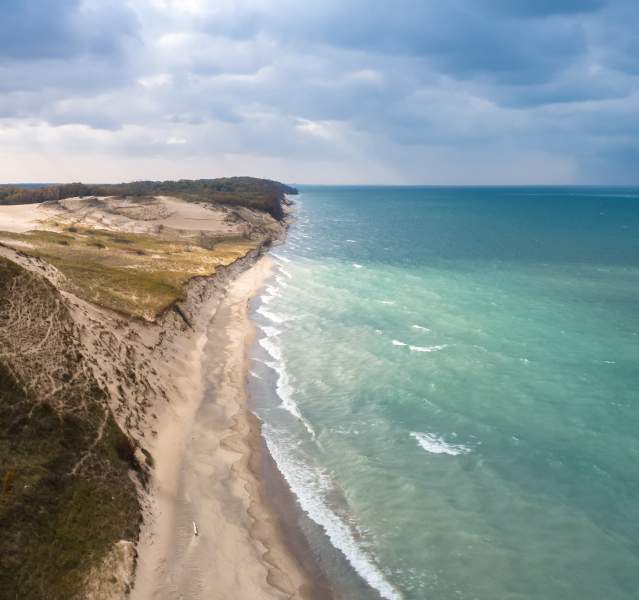There's more to the Indiana Dunes than warm sand, blue water, and miles of hiking trails. For example, as of 2021, it's the fifth most biodiverse national park in the United States, right behind Yosemite! The Indiana Dunes' environment, ecology, and history are really what make it a special place.
Birthplace of ecology
The Indiana Dunes are known as the birthplace of the science of ecology—that's the study of organisms and how they relate to one another and their physical surroundings. Henry Chandler Cowles, a professor from the University of Chicago, studied ecological succession in the Indiana Dunes, which led to efforts to preserve the habitats. To see dune succession in action, be sure to visit West Beach's Dune Succession Trail, also known as the Diana Dunes Dare.
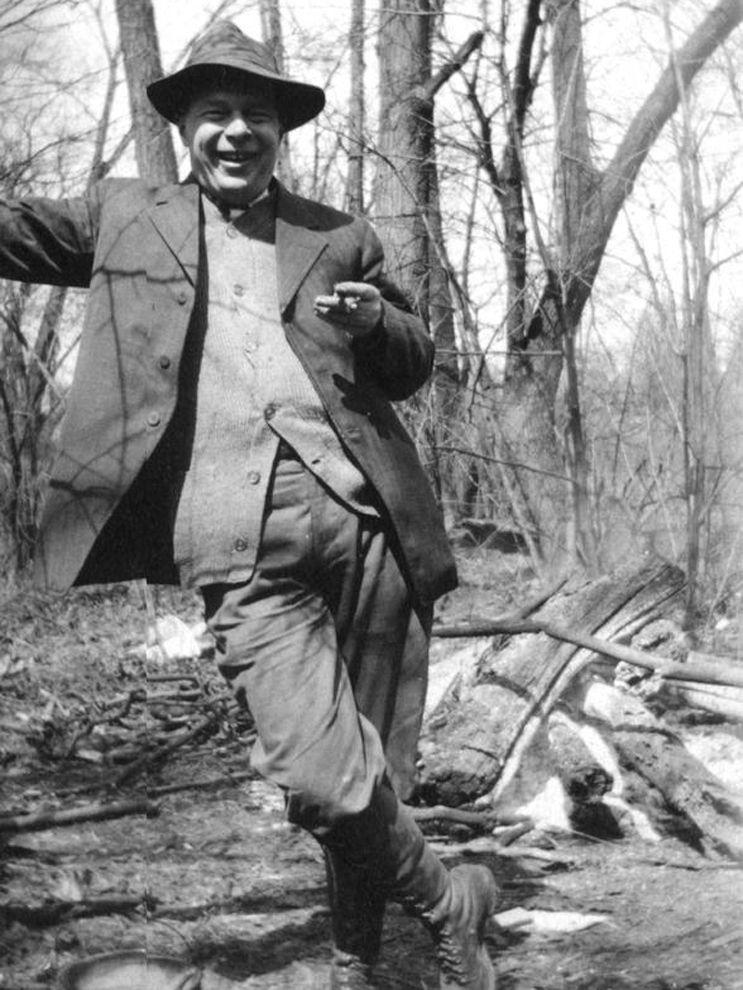
Unexpected plants
This whole area may look like a desert, but it is freezing and snow-covered for several months out of the year. Not exactly the ideal place for a cactus—or is it? The prickly pear cactus thrives because of the dunes' desert-like sand. For cacti to thrive, they need well-drained sand and lots of sun. We have plenty of both here at the dunes. We also have more varieties of orchids than all of Hawaii! Check out our monthly wildflower guide to learn where and when you'll find wildflowers in bloom.
 Sundew at Pinhook Bog - Thad Donovan
Sundew at Pinhook Bog - Thad Donovan
Another little-known fact is that the Indiana Dunes are full of unique carnivorous plants! Have you heard of a narrow-leaved sundew or a purple pitcher plant? Like the well-known venus fly-trap, these are killer plants that feed on small insects thanks to their clever adaptations. These little meat-eaters can be found at Pinhook Bog.
Conservation efforts
Environmentalist groups and individuals fought to establish the State Park and National Park. The movement began in 1899! The State of Indiana petitioned for ten years before the State Park opened to the public in 1926. After a decades-long battle, Congress established both the Port of Indiana and the Indiana Dunes National Lakeshore. It took until 2019 for the lakeshore to officially become the Indiana Dunes National Park. You don't have to be a part of a large movement to help the Indiana Dunes. The Volunteer Drop-in program allows people to give back in an easy way with no long-term commitments and the Love and Protect program encourages sustainable travel.
Singing Sands
Dunes, of course, are made of sand, but what is sand made out of? The sand itself is mostly made out of quartz and silica left behind by glaciers. Its composition creates an interesting sound when you walk on it, which is why we call it "singing sands." There are only a few other places in the world that have singing sands, like Dubai and Japan.
Types of dunes
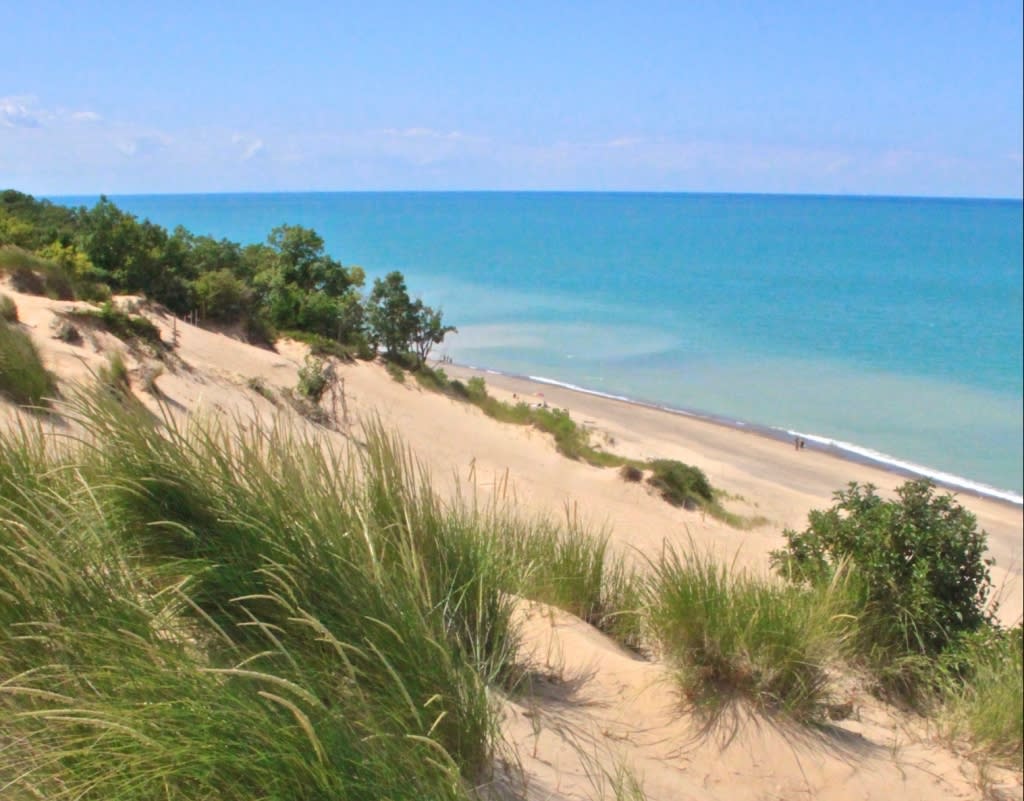
There are two types of dunes: foredunes and blowout dunes. Foredunes are close to the beach and covered in vegetation like marram grass. This makes for a more stabilized dune and allows even more plant life to thrive. Blowout dunes are caused by intense winds that rip the dunes apart. The loose sand makes a "living dune," that can move up to several feet every year! Blowout dunes can sometimes be the result of unapproved trails, or social trails, which gradually turn into bigger and bigger areas of sand. So, please check your map to make sure you are on approved trails only!
Tree graveyards
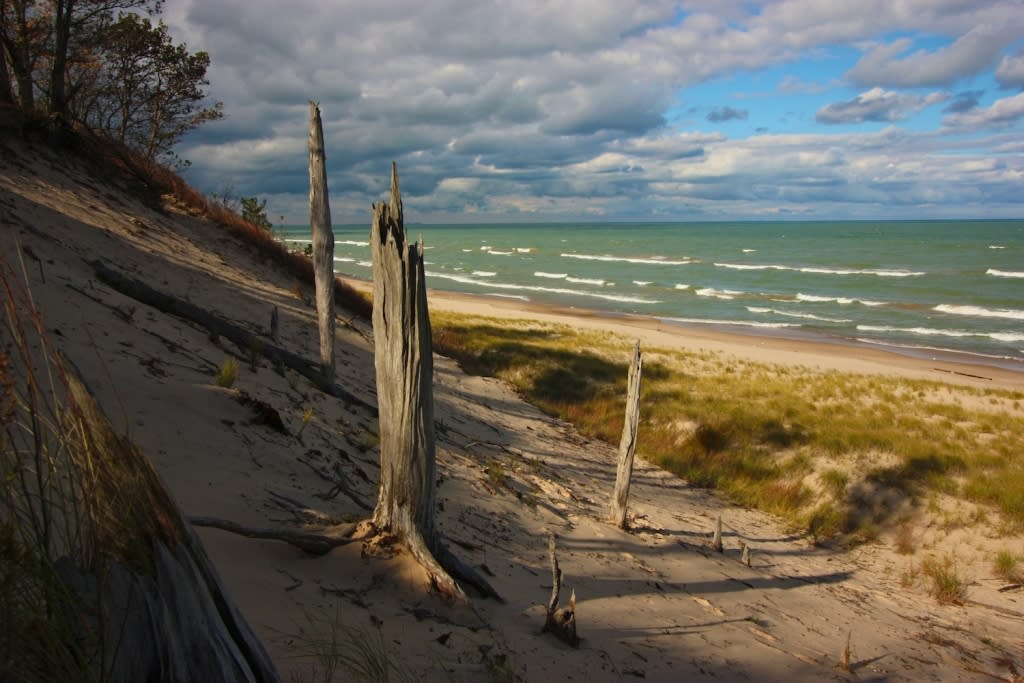 Tree Graveyard in the Indiana Dunes
Tree Graveyard in the Indiana Dunes
One of the many interesting features caused by living dunes are tree graveyards. These happen when sand blows over a forest, burying it and killing its trees. When the trees are re-exposed by wind erosion, a tree graveyard appears
Saltation
Do you know what saltation means? It's the movement of sand by turbulent air and water flow, and it happens all along our beaches. The sand piles up and eventually forms larger dunes, like Mt. Tom, the tallest dune in the area at 192 feet.
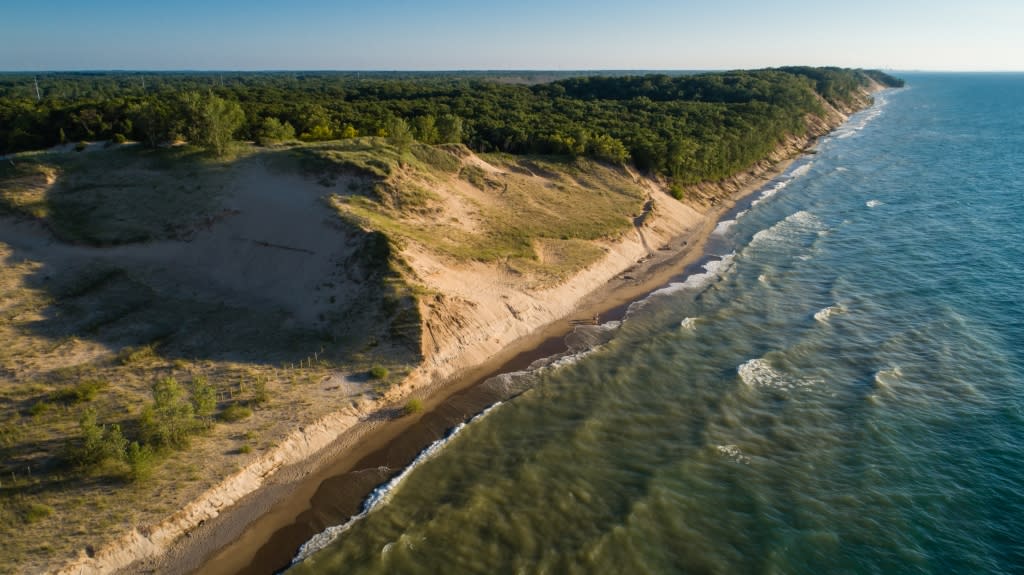 Aerial View of Mount Baldy
Aerial View of Mount Baldy
Animals of the Indiana Dunes

Six-lined race runners dart across the sand at up to 18 miles per hour—that's almost as fast as an Olympic sprinter! Also native to the area is the gorgeous red fox. They have ears so sensitive that they can hear a mouse scratching a leaf 150 feet away. On top of that, more than 370 species of birds live or migrate through the dunes every single year. At certain times of the year, this is one of the best birding destinations in the nation. There is even a species of frog that has learned to preserve heat in its cells to make it through the frozen winters! But probably the most hard-working animal in the dunes is the dune beaver. We see them working on their dams every hour between dusk and dawn.
A Rare Flower
The French Polygala is something special. It only grows on the northern slope of one specific dune, and nowhere else in Indiana. Its common name is Gaywing because it almost looks like it could take flight! Because it's an endangered species, we keep its exact location secret. Not all of our wildflowers are a well-kept secret though. Our monthly wildflower guide gives tips on where you'll find plenty of pretty flowers.
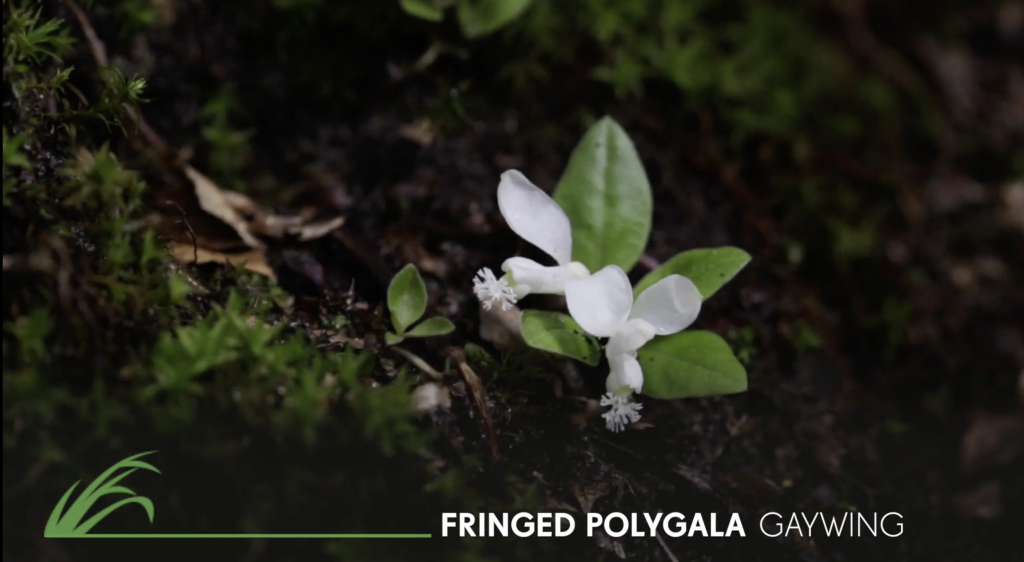
These are just a few of the fun facts about the Indiana Dunes. If you spot a ranger while exploring the dunes, don't be afraid to ask a question! There are many more fascinating facts to learn. You can also stop by the State Park's Nature Center or the Indiana Dunes Visitor Center to speak with a ranger.
<iframe width="560" height="315" src="https://www.youtube.com/embed/W_jYf5InMWI?si=P-CS-lI2cR7ROUTg" title="YouTube video player" frameborder="0" allow="accelerometer; autoplay; clipboard-write; encrypted-media; gyroscope; picture-in-picture; web-share" referrerpolicy="strict-origin-when-cross-origin" allowfullscreen></iframe>
For more tips and planning tools, get a copy of our Activities Guide at the Indiana Dunes Visitor Center or online here. And don't forget to SUBSCRIBE to our YouTube channel so you can get the most out of our Dunes 101 video series!
